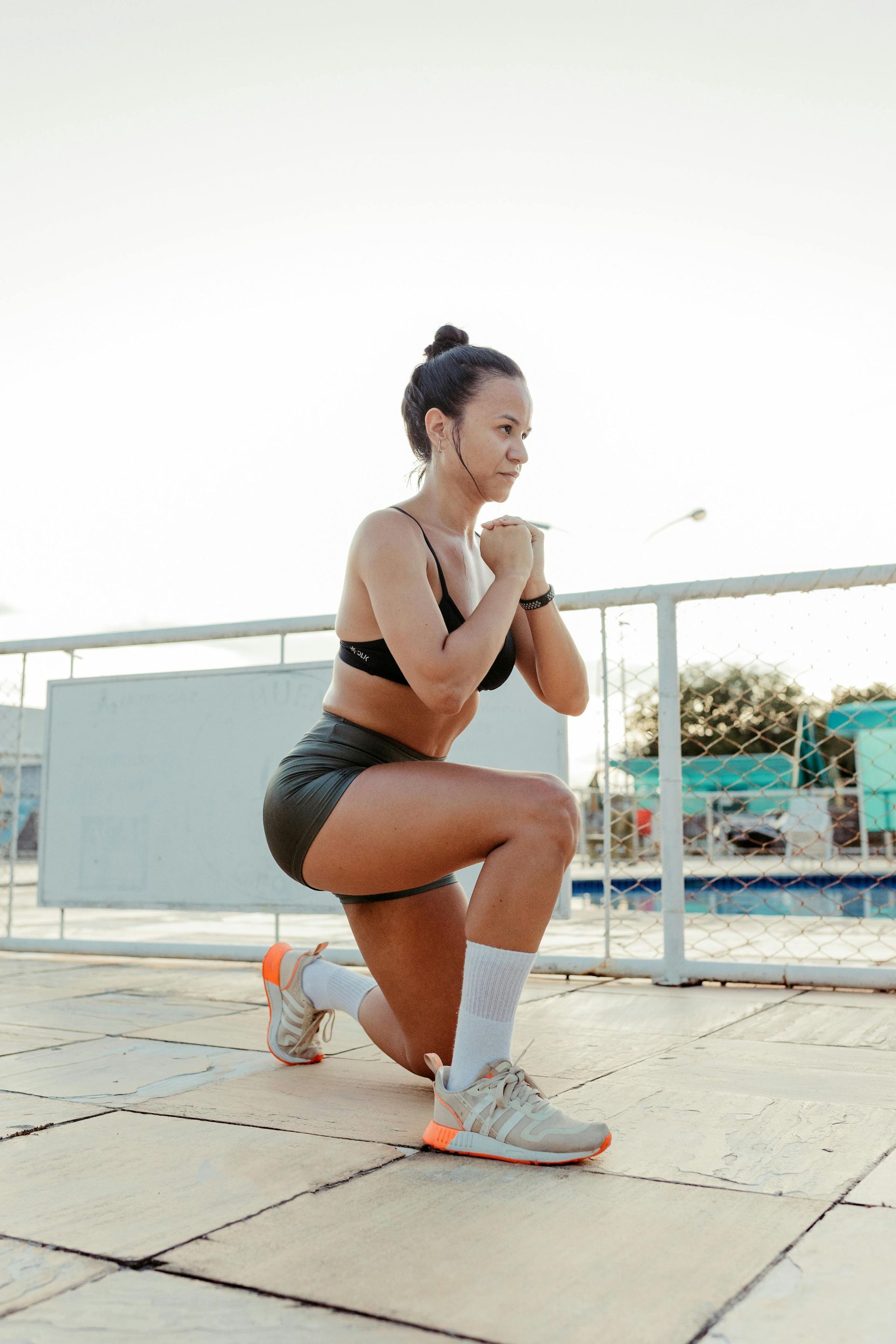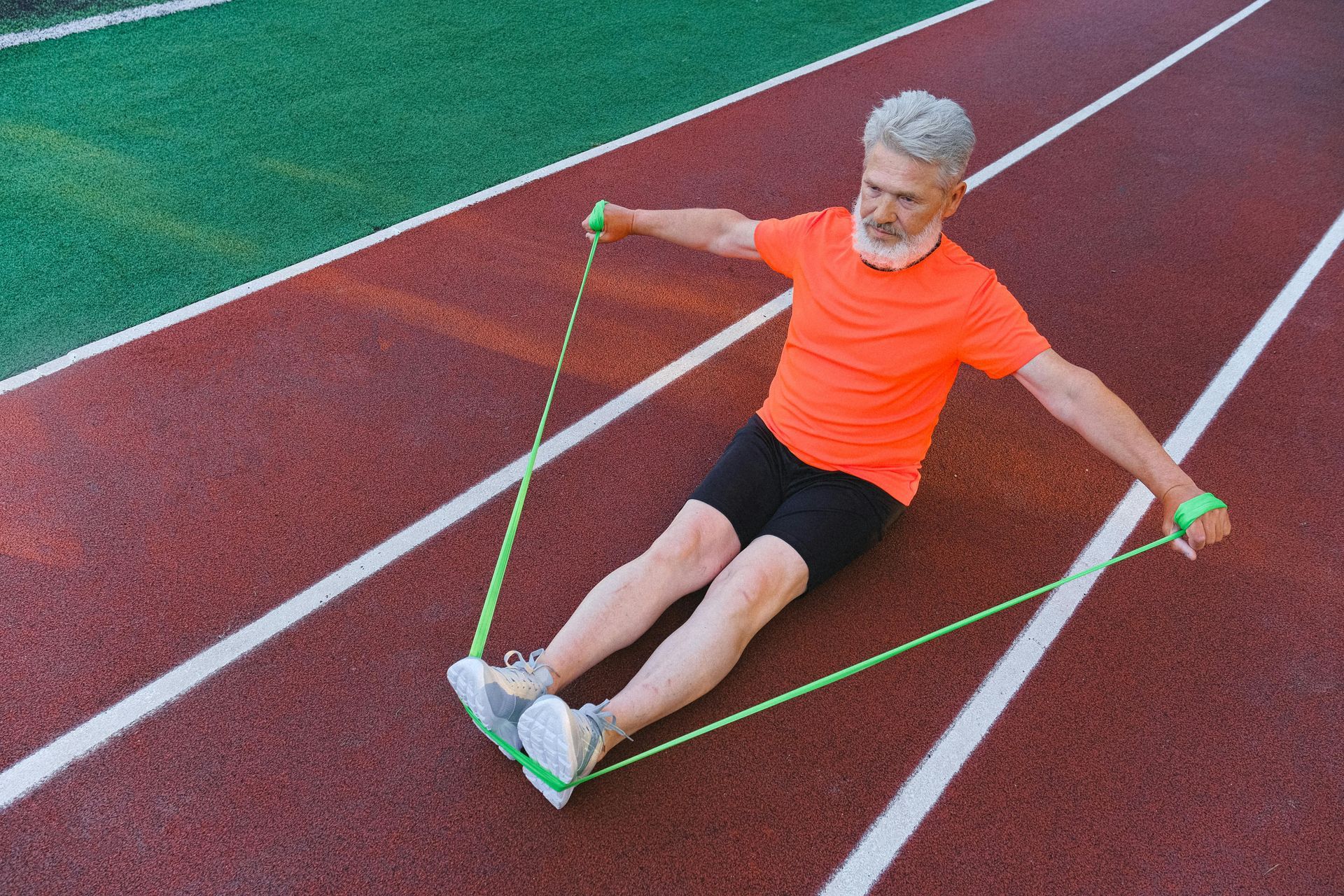Strength vs. Stability: Why You Need More Than Just Heavy Lifting

If you’re someone who spends hours in the gym, lifting heavier weights every week, but still deals with nagging aches, tightness, or even injuries, you’re not alone. I see this all the time.
People come in complaining about shoulder pain, lower back tightness, or feeling stiff, even though they train hard and look strong. When I check their movement, though, there’s one thing that stands out, they’re
strong, but not stable.
This is a common issue, especially for those who focus only on building muscle and strength while ignoring stability and mobility. Strength alone isn’t enough. If your body can’t control that strength, you’re setting yourself up for problems.
What’s the Difference Between Strength and Stability?
Strength is about generating force, lifting, pushing, pulling, and carrying heavier loads. It’s important for power, athletic performance, and building muscle.
Stability, on the other hand, is about controlling movement. It’s what keeps your joints in the right position, prevents unnecessary stress on your body, and allows you to move efficiently without compensation.
Think of it like this:
- Strength is how much weight you can lift.
- Stability is how well you control that weight.
If you only focus on getting stronger but ignore stability, you might still find yourself struggling with stiffness, limited range of motion, or even injuries.
Why Strength Alone Isn’t Enough
I've seen plenty of lifters who can press heavy weights but struggle with simple bodyweight movements. They might have strong shoulders, backs, and legs, but their movement patterns are off.
Here’s what happens when you only focus on strength and neglect stability:
- You Get Tight and Stiff
- Strong muscles can become overactive if stabilizing muscles aren’t doing their job. This leads to tightness and poor mobility.
- Your Form Breaks Down Under Load
- Without stability, your joints don’t track properly, increasing the risk of injuries. This is especially true for the shoulders, knees, and lower back.
- You Waste Energy
- If your stabilizers aren’t firing properly, your body works harder than it needs to. This leads to fatigue and inefficient movement.
This is why some of the strongest people still struggle with pain and tightness. They’ve built power, but they haven’t trained their body to control it properly.
How to Train Strength and Stability Together
If you want to move better, lift heavier, and avoid injuries, you need to train both strength and stability.
1. Start with Stability Work in Your Warm-Up
Instead of jumping straight into heavy lifting, spend a few minutes activating the muscles that control movement.
Exercises to try:
- Dead bugs (core stability)
- Pallof press (anti-rotation core strength)
- Scapular retractions (shoulder stability)
- Single-leg balance drills (lower body control)
2. Include Unilateral (Single-Side) Movements
Most people focus on two-legged, two-armed movements like squats and deadlifts. But real life (and sports) requires balance on one leg or one arm at a time.
Exercises to try:
- Single-leg deadlifts (builds lower-body stability)
- Bulgarian split squats (develops balance and control)
- Single-arm carries (farmer’s, suitcase, or overhead) (challenges core and shoulder stability)
3. Add Isometric Holds for Extra Control
Isometric exercises reinforce joint stability and muscle endurance. They force your stabilizers to stay engaged without movement.
Exercises to try:
- Planks and side planks (core and shoulder stability)
- Paused squats (forces control in the bottom position)
- Overhead kettlebell holds (improves shoulder control)
4. Strength Train, But with Stability in Mind
When you lift, focus on controlling the movement, not just moving the weight from point A to B. That means:
- Moving with full range of motion
- Keeping the core engaged during lifts
- Using proper form and control instead of rushing through reps
Good exercises that train both strength and stability include:
- Front squats (require core activation for proper posture)
- Overhead dumbbell presses (demand shoulder stability)
- Romanian deadlifts (improve hip stability and hamstring strength)
Final Thoughts: Train Smarter, Not Just Harder
Lifting heavier weights is great, but if you can’t control them properly, you’re not as strong as you think. Strength without stability is like having a powerful car with no steering—it’s only a matter of time before something goes wrong.
If you’ve been feeling tight, stiff, or sore despite training hard, it might be time to shift your focus. Build a foundation of stability, mobility, and control, and you’ll not only get stronger, you’ll move better, feel better, and train pain-free.
If you need help improving your stability and movement, let’s work on a plan to keep you strong and injury-free.
Reference
- McGill, S. (2014). Ultimate Back Fitness and Performance. Backfitpro Inc.
- Behm, D. G., Drinkwater, E. J., Willardson, J. M., & Cowley, P. M. (2010). "The use of instability to train the core musculature." Strength & Conditioning Journal, 32(3), 42-48.
- Kibler, W. B., Ludewig, P. M., McClure, P. W., Michener, L. A., Bak, K., & Sciascia, A. (2013). "Clinical implications of scapular dyskinesis in shoulder injury." British Journal of Sports Medicine, 47(5), 263-273.
- Cook, G. (2010). Movement: Functional Movement Systems. On Target Publications.
- Hibbs, A. E., Thompson, K. G., French, D., Wrigley, A., & Spears, I. (2008). "Optimizing performance by improving core stability and strength." Sports Medicine, 38(12), 995-1008.
- Myer, G. D., Ford, K. R., Brent, J. L., & Hewett, T. E. (2006). "The effects of plyometric versus dynamic stabilization and balance training on power, balance, and landing force in female athletes." Journal of Strength and Conditioning Research, 20(2), 345-353.
- Huxel Bliven, K. C., & Anderson, B. E. (2013). "Core stability training for injury prevention." Sports Health, 5(6), 514-522.
Blogs














